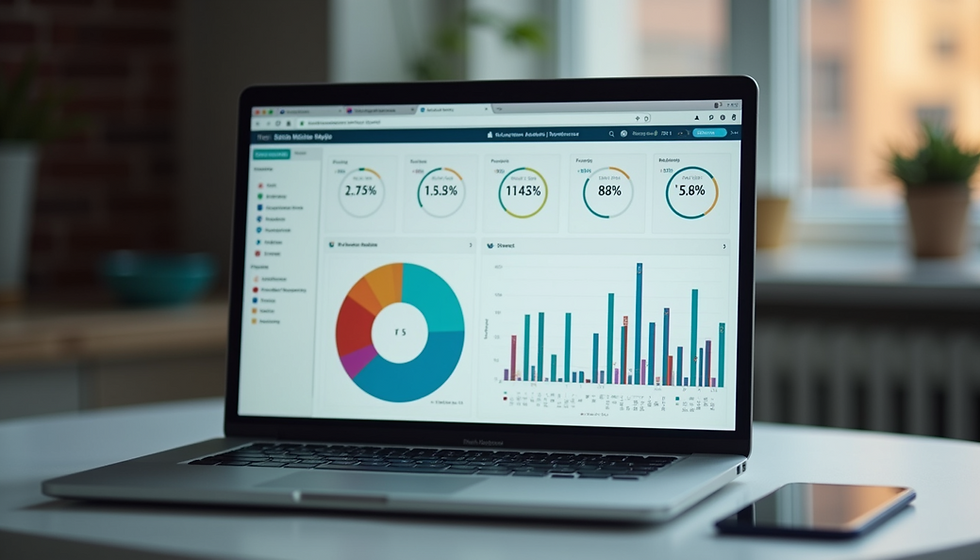The Basics of Building a Social Media Strategy
- kotalayne
- Feb 4, 2024
- 4 min read
Before we jump into the basics of building a successful social media strategy let's start by defining what a social media strategy is. A social media strategy is an outline of the content that your business will post, the responsibilities of your social media team, and the social media channels you will use to promote your business. Generally, your social media strategy includes the social media goals that complement your business's overall digital marketing strategy.
Before you begin building your social media strategy it is important to choose the right social media platforms for your business. The 70/30 rule is a great tool to help with this, you focus 70% of your effort on the core platform that you will be using and the other 30% on staying present and testing other platforms that you want to incorporate. To help identify the platform on which you'll focus 70% of your effort you will need to do some research and create a spreadsheet so you can score each platform based on these questions:
How many of your ideal customers are on this platform?
How much time do your ideal customers spend on the platform?
What are the future growth projections for the two points above?
How do your skills tie in with this social platform?
How much do you enjoy using this platform?
Social Media Examiner
When you finish filling out the spreadsheet the platform with the highest total score should be the one you focus 70% of your efforts on. The second, third, and fourth-place platforms should occupy the other 30%. This 70/30 split ensures the greatest ROI from the most favorable social media platform while staying present and emerging on the other platforms.
Choose Your Core Piece of Content Format
Now that we have our social media platforms squared away it's time to choose the core piece of content format that you will create each week and repurpose across social media. The content format should be tailored to match the platform your main focus is on. A core piece of content format could include live videos, blogs, podcasts, infographics, short videos, reels, stories, images, etc. It is important to remember what your skills are when picking a type of content format and the type of content that resonates with your target audience. It is also important to choose a format that correlates with your business and the type of content you want to produce.
Pictory
Develop Core Content Themes
Now that you have chosen a format for your content it is time to develop your core content themes. There are a lot of different content themes to choose from, you can produce educational content, storytelling content, entertaining content (interviews, bloopers, contests, giveaways, etc), inspirational content, funny content, or creative. The theme you choose should correlate to your brand and target audience.
King Creative
Create a Content Production, Publishing, and Promotion Plan
A publishing plan outlines the core content themes and specific pieces of content you will publish each week and how they fit into the marketing funnel (Awareness, Consideration, and Purchase). Generally a split of 60% awareness content, 30% consideration content, and 10% purchase content works well for most businesses focusing on the marketing funnel.
Social Media Examiner
After the publishing plan is complete, you should schedule time to create the content. Most businesses designate one day a week as a full content creation day. When you are satisfied with the content you shot it is smart to schedule the dates and times you want to post your content. Scheduling social media posts can help you save time, reach your audience at peak times, and boost your brand's consistency.
Startup Talky
Now it's time to promote your content once you have it produced. If you don't have enough of the right people viewing your content, you will not reach your social media sales targets. Part of your social media strategy is to outline everything you will do to promote your core piece of content once it is published. Here are some of the most commonly used strategies to promote your content:
Run paid social media ads
Promote via email marketing
Ask your internal team to like, comment, and share your posts
Mention your content in presentations, podcasts, and webinars
Pin it to the top of your socials
Outline How You Will Measure Performance
Tracking your social media performance will help you make any tweaks needed to deliver persistently. Two key areas focused on when measuring performance are primary key performance indicators (KPIs), and secondary KPIs. Primary KPIs are based on the main objective you want to attain from social media, usually sales. Secondary KPIs are the supporting measurements you can monitor to ensure your social media strategy is on track to deliver primary KPIs. Secondary KPIs include website traffic from social media, social media engagement percentage growth, and social media audience growth. These tools will allow you to directly track primary and secondary KPIs such as sales from social media.
Primary KPIs:
Conversion-based Facebook and Instagram ads
Leadfeeder
Asking every new customer how they discovered you
Creating discount codes for social media
Secondary KPIs
Google Analytics
Built-in social media analytics
Now you are ready to start building your social media strategy! Follow us on all social media platforms so you don't miss any of our helpful tips on how to build your social media presence.










Comments